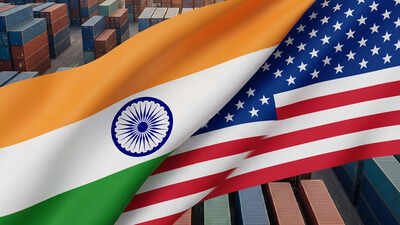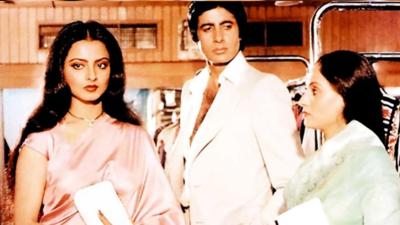
When the bootsteps of US Marines echo through the streets of Los Angeles—not in defence of the nation, but deployed against its own people—history shudders. What we are witnessing is not merely a flashpoint in American politics, but the tremor of a collapsing democratic compact. President Donald Trump has crossed a Rubicon, not in service of security, but in a calculated, authoritarian bid to redefine dissent as insurrection.
This is not a drill. This is not merely political brinkmanship. A constitutional reckoning is underway—and the world is watching.
The tanks are not just rolling—they are redrawing the map of American power
In a stark echo of history’s most troubling precedents, US Marines and National Guard troops now patrol not distant battlefields, but the streets of American cities. The pretext: a crackdown on protests following mass immigration raids, executed with mechanical cruelty. But peel back the rhetoric about “national sovereignty” and “foreign lawlessness,” and what remains is a naked attempt to militarize policy failure and crush democratic expression.
In Los Angeles, over 2,000 troops, including 700 active-duty Marines, were stationed in proximity to protest sites. Their stated mission: to “protect federal property.” But their real function was symbolic—the projection of raw power, of martial discipline, of command from above. Curfews were imposed, hundreds arrested, and images of troops “accompanying” ICE agents into Latino neighborhoods sent a singular message: Dissent will be policed at gunpoint.
Law and constitutional precedent: A republic rewritten
This moment marks a historic constitutional rupture. Trump’s move to federalize the California National Guard without the governor’s consent defies established precedent and strikes at the core of American federalism. Governor Gavin Newsom’s lawsuit, Newsom v. Trump, invokes the Tenth Amendment and the Posse Comitatus Act, which forbids the military from enforcing civilian law.
And yet, federal troops roam Los Angeles with semi-automatic precision. What was once unimaginable—federal armed forces embedded in US cities amid peaceful protests—is now fait accompli. Legal experts warn this deployment could set a precedent as dangerous as it is durable, allowing future presidents to invoke vague notions of “sovereignty” to sidestep governors, mayors, courts—even Congress.
This is not law enforcement. It is executive imperialism.
Political theatre masquerading as public safety
President Trump’s apocalyptic tone—accusing protesters of waving “foreign flags” and bringing “third-world lawlessness”—is less a diagnosis than a dramaturgical strategy. In invoking militarism while invoking patriotism, Trump is staging a pantomime of leadership for his base, wielding the US military not as a shield of the republic, but as a prop of the presidency.
Let’s be clear: the majority of protests were peaceful. Community leaders, clergy, and concerned citizens chanted “peaceful protest” with their hands raised. But Trump did not seek de-escalation. He sought a show. Marines in flak jackets, helicopters buzzing overhead, police with rubber bullets—it is not governance. It is political theatre, laced with menace and intent.
This is not about public order. It is about performance authoritarianism.
Military strain: Morale collapses under orders
Behind the stoic faces of America’s uniformed services lies a brewing crisis. Soldiers have privately expressed alarm at their use against civilians. Reports from Seal Beach and downtown staging areas describe low morale, chaotic logistics, and profound unease about what they are being asked to do.
The mission, ambiguously defined, leaves many service members caught in a legal and ethical limbo. Are they defenders of the nation, or enforcers of a presidency? Are they protecting property, or intimidating political opposition?
We must ask: How long can the military endure being cast in this role before the institution itself begins to fray?
Democratic erosion: The No Kings moment
In a fiery, televised address, governor Newsom declared, “Democracy is under assault.” It was not rhetoric—it was a tocsin. Across the nation, protests have erupted under the banner “No Kings Day,” symbolically timed with Trump’s birthday and echoing the Founding Fathers’ rejection of monarchy.
What we are witnessing is not a partisan rift. It is a populist, cross-ideological resistance to the corrosion of democratic norms. When the military is used to quell dissent, when judges are ignored, when governors are threatened with arrest, when immigrants are hunted and their allies imprisoned—what remains of the democratic edifice?
A republic does not fall in a single day. It erodes—curfew by curfew, raid by raid, arrest by arrest.
A global reckoning
The United States has long cast itself as a global beacon of democratic liberty. But today, images of troops confronting children of immigrants, of curfews enforced by men in camouflage, of governors suing their president to defend basic rights—these are not the hallmarks of democracy.
They are the symptoms of a failing one.
From Paris to Pretoria, New Delhi to New York, global observers must now confront an unthinkable reality: the world’s oldest constitutional democracy is no longer immune to authoritarian drift. The contagion of militarized populism has reached home.
The final question
This moment will enter history books—but how it is remembered will depend on what comes next. Will the courts restore balance? Will the military resist politicization? Will the people demand their republic back?
The world must not look away. Because if America forgets itself—if it allows tanks in the streets to become the new normal—then the idea of democracy itself is at stake.
This is not Los Angeles’s crisis alone.
This is everyone’s fight.
Disclaimer
Views expressed above are the author’s own.
END OF ARTICLE






